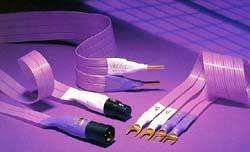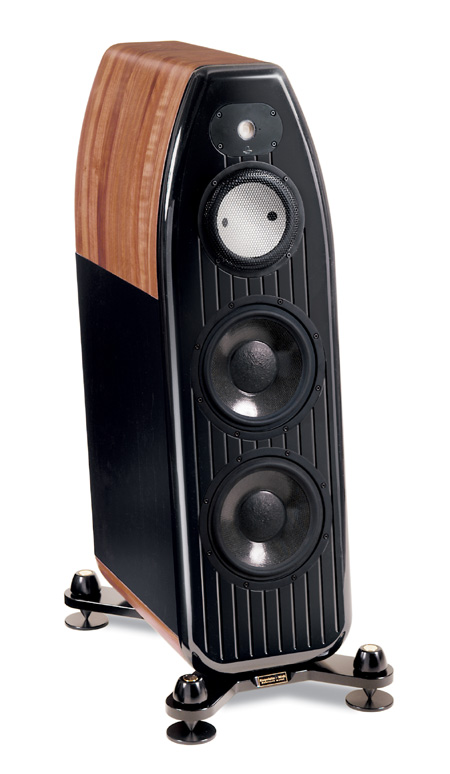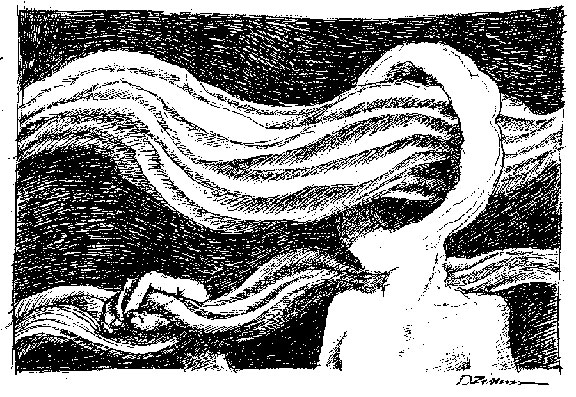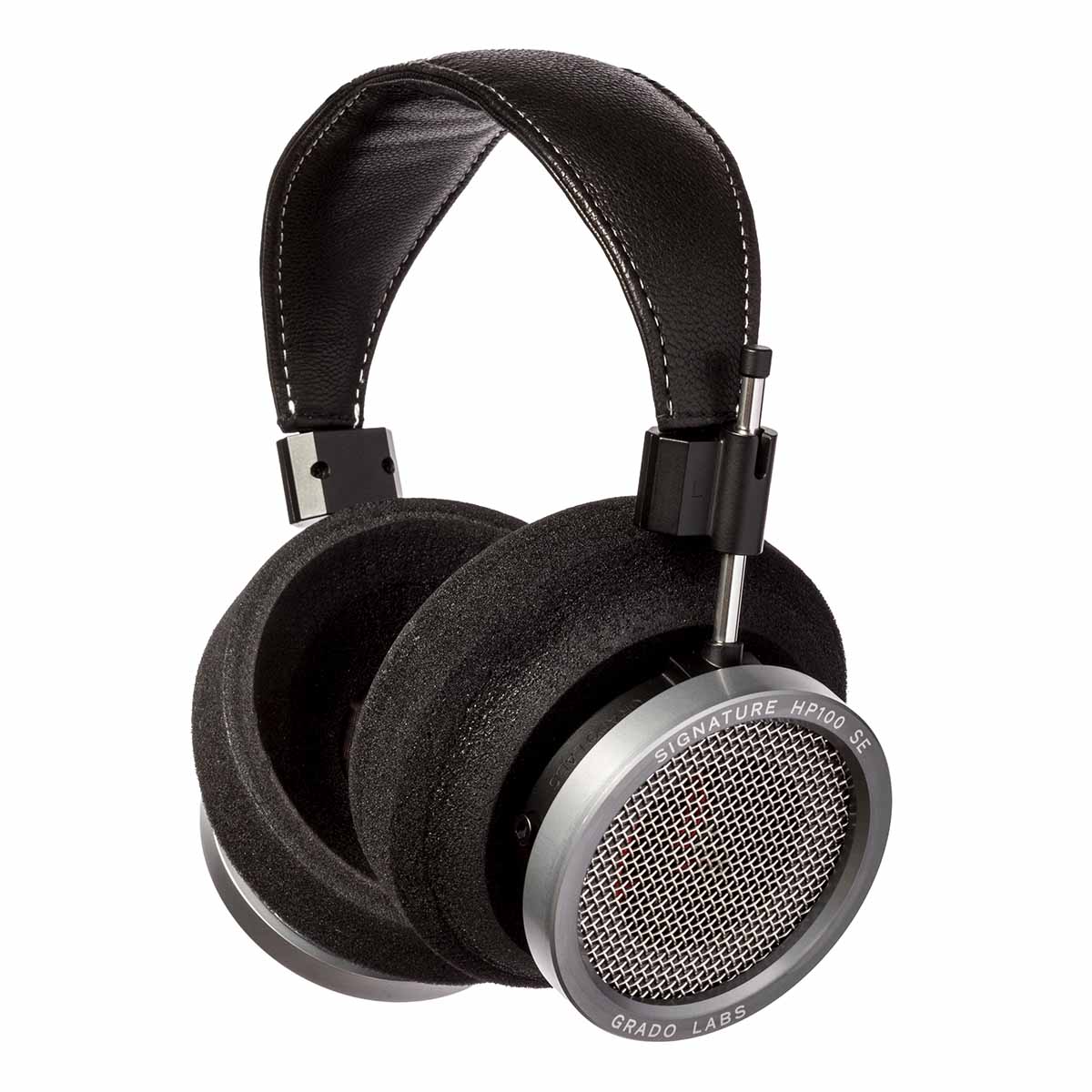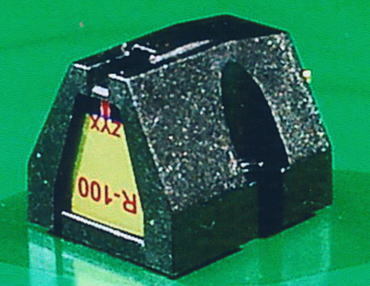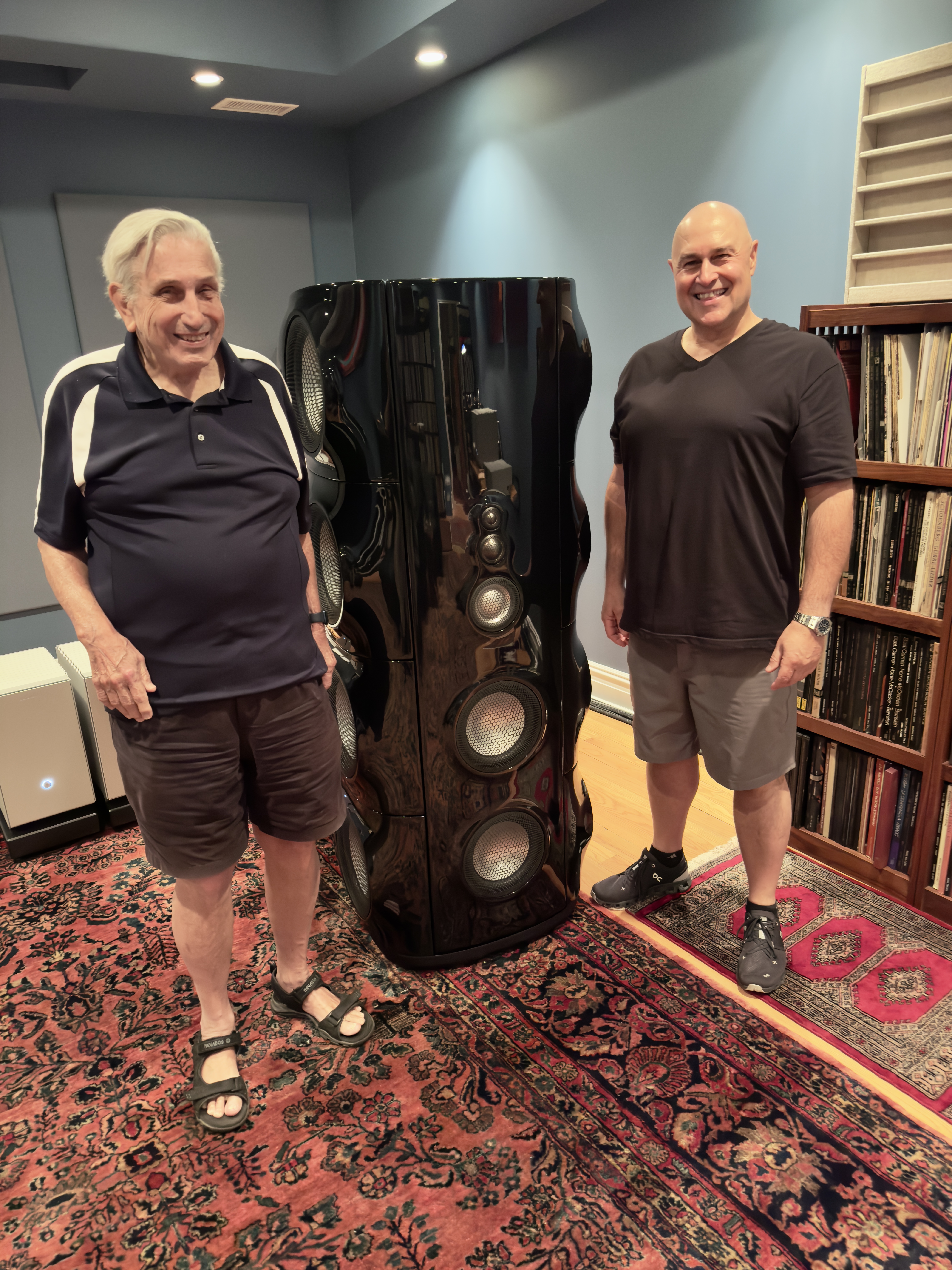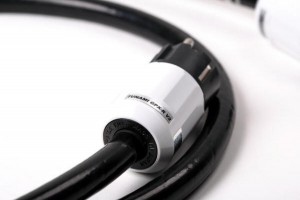This article, by Dave Clark, Victor Chavira, Francisco Duran, and Sherman Hong, originally ran when audioMUSINGS was in print - Issue 1, 1998.
At the Hi-Fi 97 Show in San Francisco, Vince Garino and Joe Reynolds of Nordost were most gracious in giving Carol and me a semi-private demonstration of the cable line. The demonstration involved Lars starting the session with Blue Heaven cables, substituting Red Dawn for the Blue Heaven, then the SPM References for the Red Dawn, all the while using the same track and source. I expected all the cables in the line would sound similar. After all, they are very similar in design, materials, and appearance. Boy, was I wrong. Sure, there was a family resemblance—the speed and clarity that Nordost cables are known for–but the Red Dawn was a significant improvement over the Blue Heaven, and when the SPM went in, even further improvement was obvious. Here was the next step in Nordost's evolution. While the Blue Heaven are fast and detailed, the Red Dawn showed them to be somewhat dry and veiled. The warmer and richer Red Dawn really opened up the music, while revealing details and a sense of "aliveness" that was now shown to be absent with the Blue Heaven. Unfortunately, the SPM really went the extra mile. You simply were transported to the recording event with the SPM. The SPM is so fast and neutral that everything is laid out before you in naked glory. I say "unfortunately" because we could never afford these cables. But wow, Carol and I had to get them for audioMUSINGS, and so here we are.
In our system, substituting the SPM Reference interconnects and speaker cables for the Blue Heaven and Hovland combo really brought out never-before-known qualities. On cut after cut I was made shockingly aware of how much information and palpability I had previously been missing. (I hate using that term, but there it is. I said it: "palpability.") I was able to sense the air and space around the musicians; they became much more three-dimensional. Listening to the bass solo on Thomas Chapin Trio Menagerie Dreams' "Raise Four" was so much fun that I invited a bass-playing friend over for his assessment. He sat and listened quietly until he replied, "Man, I can see the guy playing. The fingers on the strings and woody resonance are like when I'm practicing. How much did you say these cables cost?" He then played along "air" style ‘til the end. Everything just sounded more real than before. And that is not to infer that I had felt my system to be lacking in realism before installing the SPM Reference. Just the opposite, I was suffering from it just can't get any better than this syndrome.
Brian Eno's Nerve Net is one of my all-time favorites, and the SPM Reference really made this recording a whole new experience. They did this adding little or no warmth, unlike the way the Red Dawn had warmed things up compared to the Blue Heaven. My system is already warm enough, so the SPM Reference's ability to do what it did without adding warmth was a relief. By comparison, the Hovland speaker cables accentuate the upper- through midbass range in my system, which pushes the Apogees a bit too far in terms of the perceived oomph. On some tracks, the speakers can sound a little bloated or too full in the bass. The SPM Reference, while having excellent bass, alleviated this to a degree that was quite a relief. These cables are very neutral and uncolored, almost to the point of being too revealing, though I never found this to be the least bit objectionable. As a matter of fact, I delighted in their ability to allow me to really get into the musical experience.
Favorites were the track "Straight no Chaser" from the Ginger Baker Trio's Going Back Home, the way over-played, but still enjoyable, Temptation CD by the Holly Cole Trio, and pretty much any record by Anton Fier or Bill Laswell. The SPM Reference never sounded etched or hyped-up in any way. Try the title track of Erykah Badu's Rimshot. The "rimshot" can verge on being way too up-front and in your face, but with the SPM References, it seemed much more natural and in tune with the accompaniment. This is almost the opposite of what I hear when using the Blue Heaven/Hovland duo. And listen to the bass on this track. Talk about deep and tactile, this is about as low as it gets. While both sets of cables provided startling bass extension, the SPM offered greater dimension and detail. Discs that I listen to while unwinding after a long day at work include Brian Ferry's Taxi, Nicky Skopelitis' Ekstasis (the track "Ghost of a Chance" is a true test of spatiality and imaging), Henry Threadgill's Too Much Sugar For a Dime, and the Golden Palominos' Pure. With the SPM Reference, the speakers just got out of the way and let the music flow, cut after cut, disc after disc, LP after LP, night after night, you get the idea. Like opening the floodgates of a dam, the SPM Reference allowed the musical experience to wash me away.
It was a real kick to finally hear what a cost-no-object cable sounds like in my own system, and with no pressure to purchase. Yes, expensive cables do sound expensive. Why the high price? All the SPM Reference cables use silver-plated, 99.999999% Oxygen-Free Copper with a Teflon dielectric, but so what! So do a lot of other cables that cost considerably less. The key is the slow Class 1 extrusion process. Nordost specifies that each conductor is encapsulated in exactly 5mm of Teflon, with the plating and spacing of each conductor held to the tightest of tolerances. Apparently these specifications result in a fair amount of rejects, meaning cost of production is quite high. The result, though, is a cable with extremely low capacitance, low inductance, and low signal loss. Nordost also claims the elimination of reflections and the reduction of standing waves in the SPM Reference.
That's all easy for Vince and Joe to say. What I know is that I will need to adjust my spending pattern to find the cash for these beautiful cables. But you know, even if I can't manage it, I sit listening to my system with the Blue Heaven/Hovland combo reinstalled and think, well hey this is pretty good! Sure, there's probably too much bass and warmth for some listeners, but the system really rumbles and rolls. And yeah, some details are probably being obscured by all of this added oomph, but with the quality of most recordings, that's not necessarily a bad thing. Maybe we'll use the money for a trip to Europe. Carol will go for that! Dave Clark
It is common knowledge among audio enthusiasts that if you want to do something big about your sound, change amps or speakers, or upgrade your DAC. Speaker cables are often overlooked. One simply doesn't have a point of reference for how colored and congested speaker cables can sound. I recently gained a point of reference when I auditioned two cables from Nordost. The Superflat is a 16-conductor flat bi-wire copper cable with extruded Teflon insulation, and the SPM Reference is a 32-conductor flat bi-wire of proprietary composition.
The first cable I inserted was the Superflat, which is comparably priced to my reference Tara Labs Rectangular Solid Core Biwire 1000. My immediate impression was that the Superflat gave a sense of ease and clarity to the music. Good examples could be heard any of the many discs of guitar music that I listen to. Acoustic guitars were rendered with a vividness that was not perceivable before, unless I raised the volume. Often, when we raise the volume in an effort to hear more and farther into the music, all that happens is that the sound gets louder. With the Superflat, my perception of subtle details was greater. My imagination hardly worked at all to visualize the soundstage and musicians.
Nevertheless, the overall quality and character of sounds was quite similar to the Tara. Paco de Lucia's guitar sounded similar through both cables, with the Superflat edging out the RSC in vividness and spatial detail.
After spending some time with the Superflat, I switched in the SPM Reference. The SPM is a cable that normally I would not have the privilege of listening to, given that its price approaches that of my entire system. However, I would also never have appreciated just how musically satisfying my modest system truly is. I can state unequivocally that the SPM is the most natural- sounding cable I have ever heard in my system. This can, if you think about it, be not such a good thing to have. What if your system sounds thin or bright? What if your DAC isn't dancing the way it should? What if your preamplifier is a tad colored? Would want more of that? In the case of my tube-based system, the answer is a resounding yes! With the SPM in my system I literally felt as if there were no obstacles between me and the music.
Bass energy seemed to flow effortlessly from the Anthem Amp 1 to the Maggies. For bass resolution I like anything with Jimmy Haslip. Haslip plays 6-string fretless bass. His sound is rich, warm, and deep, especially when sustaining notes on the lowest strings. Audio friends sometimes mistake his tone for upright acoustic bass. I had no idea that he played with such ease and flow because bass energy sounded forced through my RSC cables. The SPM cables revealed that I had erroneously attributed this flaw to the Maggies, and had learned to live with it. Ron Carter is another bass player with a deep rich tone. Listen to Jim Hall and Friends, Live at Town Hall, Volume I where Carter nimbly accompanies and trades solos with Jim Hall on "Alone Together" and "St. Tomas." I could easily visualize not just his right hand picking strings, but his left hand fingering notes and intervals along the fingerboard. The bass sounded tall, and natural.
The midrange was another pleasure. At the expense of repeating myself, the sound was natural, open, and spacious. Since Paco de Lucia plays guitar so fast, I had grown accustomed to his tone sounding thin and trebly. Nothing could be farther from the truth. The SPM allowed me to realize just how harmonically beautiful and complex Paco's guitar sounds. It sounds woody and full-bodied, like my guitars.
The SPM also gave me a whole new appreciation for treble. Treble is good. Treble swings. Treble is luster and polished shine, not harshness and glare. Violinists use very fine powdery rosin on their horse hair bows, not sand. Brushes on a snare are rhythmically and artistically played. Jewel croons into your ear that she was meant for you.
My only criticism of these cables is that some audiophiles find wide flat cables unsightly and unmanageable. (This from people who have speakers halfway into their living rooms and clusters of foam tacked up all over the walls.) My heart will ache for these cables after they're gone. For close to three thousand dollars I could almost purchase a new pair of Magneplanar 3.5R's, but after listening to the Nordost SPM Reference cable with my "I think I can" .5's, why would I want to? Victor Chavira
To me, the point of diminishing returns really hits hard when it comes to interconnects and speaker cables. (Not to mention how hard my wife would hit me if I ever sprang for what I'm about to describe below). After all, what are we talking about here, just a few feet of copper wire, no? It seems harder to justify the price of cables when they are in the four-figure category. It seems a lot more logical to shell out the same bucks for a black box full of parts in the form of a tuner or a power line conditioner, and I won't mention wooden pucks.
Nowadays we are told through advertising, dealers, and reviewers alike that wire sand cables are not just accessories but components, to be taken seriously and not just an afterthought. Still, it never ceases to amaze me how different my system can sound by just swapping one cable. At present my interconnects are Kimber's new Hero (one meter of single-ended from my EAD DAC to my Classe CP60 Preamplifier, and one meter of balanced from preamplifier to Classe CA200 Amp). The Hero replaced my longtime reference, two one-meter pairs of Acrotec 2050s, the pretty, speaker cable to go in my old system: an Aragon 4004 II, an Audio Research SP9 II, and an Aragon D2A II DAC. The smooth, relaxed, and effortless sounding Acrotec wire worked well with my old gear, especially with the not-so-smooth-sounding Aragon DAC.
The Acrotec cable is slightly warm sounding, spacious, with good detail and good mid bass, but a mite on the slow side. With the changing of the guard to the Classe and EAD gear, however, I had too much of good thing. Another reason I changed cables is because I wanted to run my amp and preamplifier in balanced mode. With the discovery of the new Hero by Kimber Kable, I found an inexpensive, great-sounding cable that struck a good balance within my system. For a reasonable amount of cash I could buy a seven or eight meter pair to pull everything but the amp (between my speakers) out of the way of the soundstage and off to the side of the room. I find the Hero to be exactly what my system needed; fast, dynamic, and clean sounding, with better detail, speed, and dynamics than the 2050's. They gave a badly needed shot in the arm to the EAD DAC, which is a bit slow in the pace and rhythm department.
This finally brings us to the Nordost SPM Reference interconnect and speaker cable. I've had flat cables before, and I'm always afraid I'm going to step on the speaker wires and bend them. I'm always stepping on my speaker wires. So I inserted the interconnect first. Wow...I could see sunbeams shining through the forest as the chorus sang out an angelic verse. The sound of my system had gone through a cleansing of grain and glare. At first, I wondered what had happened to the sound, but as I listened longer, starting out with some Genesis and Dan Fogleberg CD's (not exactly audiophile recordings), the grain and digital edginess seemed to be wiped almost clean from the disc, especially with Genesis. The sibilance was still there, but it was a very clean ssssssssss!
Electric guitars rang clear and clean when strummed or picked, as they do in real life. I especially noticed this on Poco's 1989 release Legacy, one of my favorite county rock albums even though the vocals are grungy and buzz-saw harsh. The SPM reproduced this faithfully as well. I also noticed that the recording space seemed to be more easily detected with the SPM. Decay seemed more natural and realistic. The music took on a more natural and effortless ease. In my old war horse, Brasilerio by Sergio Mendez, all the discussion and bass on the disk was revealed with new surprises. Bass and drums sounded natural, and the sounds of the instruments seemed to be layered all over the soundstage, front, back, and sides, yet the instruments seemed soundly anchored in place. Vocals and other instruments were revealed with the same grace.
Going for the gold, I put the speaker cables in my system, completing the SPM chain. The result was a cleaner sound, but still fuller, and rounder. To my surprise, the sound took on a somewhat darker character than with the Kimber/Acrotec combo. An example of this is track six of the Deep Forest disk. As the pygmy group marches around my speakers in a figure eight, followed by the electronic procession, the path they traveled seemed narrower and slightly darker with the SPM, though the music was now more sharply defined in space.
OK, so I've been switching back and forth from relatively inexpensive wires to relatively expensive wires. I hope I have conveyed great these cables performed in my system. The sound coming from my speakers was indeed an improvement. Switching to the SPM wires wasn't like going from a boom box to a Class A high end rig, although one might think so with the price difference. The longer I had them in the chain the more they revealed how natural and realistic music could be reproduced from my system.
But here is where we go back to the point I mentioned at the beginning. When I put my old wires back in place, I wasn't disappointed. Not at all, I like them. And I think this speaks for the quality of Kimber and Acrotec given the stiff competition. But if you really want to stretch the limits of your system, go for it. Try something like the SPM. Just don't step on the speaker wires. Francisco Duran
At last, my wish came true—I got to audition the best from Nordost. I had been interested in these flat purple cables for a long time. The Nordost SPM cables are not inexpensive by any standards. The interconnects are ten times the cost of my interconnects, while the speaker cables are 2.5 times the cost of my speaker wires. However, Iwill try not to let the price of the SPM's get in the way.
First, I replaced my Acrotec 6N-2050's ($160/M) with the SPM interconnects. The SPMs made a fundamental change in the sound of my system. It was as if I changed from a 25 watt incandescent light bulb to a 100 watt fluorescent. The soundstage presentation started behind the speakers, more horizontally extended and pushed back in depth. It had more of a mid-hall perspective than my reference cable. The music began at the back horizontal plane of the speakers. On "Wind Beneath My Wings," on Oxnard Sessions Volume One the SPMs pushed the piano further back and revealed more hall ambiance than ever before. It was not cable noise; the SPMs background was more quite than the Acrotecs.
The SPMs revealed whole layers of information I had never heard previously. The music extended several feet left and right beyond each speaker. This was amply demonstrated with track four from the soundtrack Mo' Better Blues. The trumpet was to the right and well behind the right speaker, while the soprano sax was positioned slightly left and well behind the left speaker. There was the greatest sense of air and space around each instrument. The saxophone possessed a body and palpability that one could feel in every note.
The treble was smooth and detailed, with a sense of limitless extension. Instruments were three dimensional, with no loss of life-size perspective. On "Nobody Knows When Your Down & Out," on EricClapton's Unplugged, the guitar was revealed with all the details, but without being etched or bright. One clearly distinguished fingers manipulating each string. Brushes gliding over the cymbals were silky smooth, detailed, and extended, with a "presence" that was just right. Not a hint of the harshness that one expects with a silver-plated copper cable. The bass was faster, and more focused and extended. On the title track of Enya's Watermark, the 20Hz bass struck with such speed, slam, and weight that the mirror over my fireplace rattled feverishly. The synthesizer bass was precise, focused, and three dimensional. There was an "oomph" factor that I have rarely heard with any other cable. Vocals bloomed, with a fullness of body and palpability. On "Everytime We Say Goodbye" from the album Red Hot + Blue, I visualized Annie Lennox in my living room. I could detect her moving around the microphone with ease. I heard her singing and breathing as if she was there. The sense of presence with this cable is quite special. Music just flowed without restraint. From the top end to the deepest bottom octave, this cable did everything one could ask for. Not many cables in the market have the total performance of the SPM interconnects, regardless of price.
Replacing my Acrotec 8N-1080 speaker wire with the SPM only produced subtle changes in the sound of my system. The overall perspective was pushed back even further, to a back-hall viewpoint. The SPM's presentation was more laid back than the Acrotec's. The sound was open, fast, transparent, and natural. The soundstage seemed less wide and deep, with a small decrease in the size of each instrument. However, the top end was open, extended, and airy. The vocals were smooth, rich, and full of body. The bass was fast, taunt, and three dimensional. Overall, the SPM speaker wire was a terrific complement to the SPM interconnect. Nevertheless, the SPM interconnects/Acrotec 8N-1080speaker wires was a better combination, in fact the best in my system yet.
I was really sad to see these cables go. They achieved special results in my system, especially the interconnects. The SPM cables are neutral, transparent, detailed and dynamic, yet they are natural, musical, and silky smooth, with resolution up the wazoo. The SPM's presented the music with an organic wholeness that was right in every respect. They rank right up there in the top echelon of cables. Ciao, purple babies. Sherman Hong
Nordost SPM cables
Retail: Interconnect $1100 for 1 meter, $1300 for 1.5 meter; Speaker cable $2900 for 2 meter bi-wired pair with spades.
Nordost




